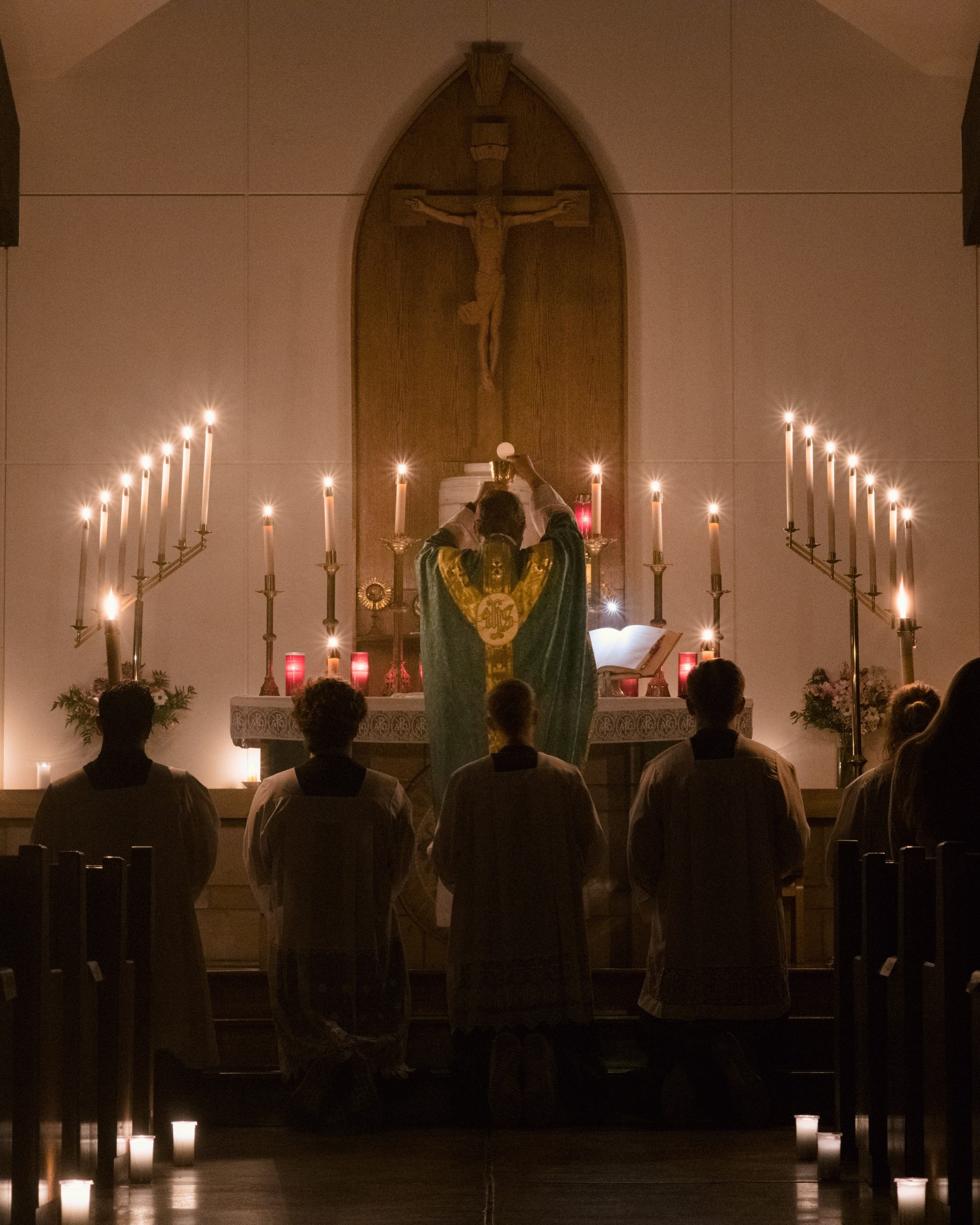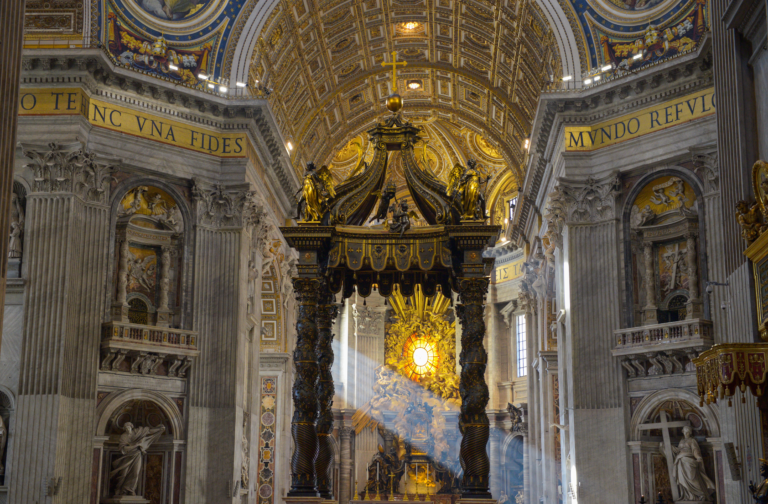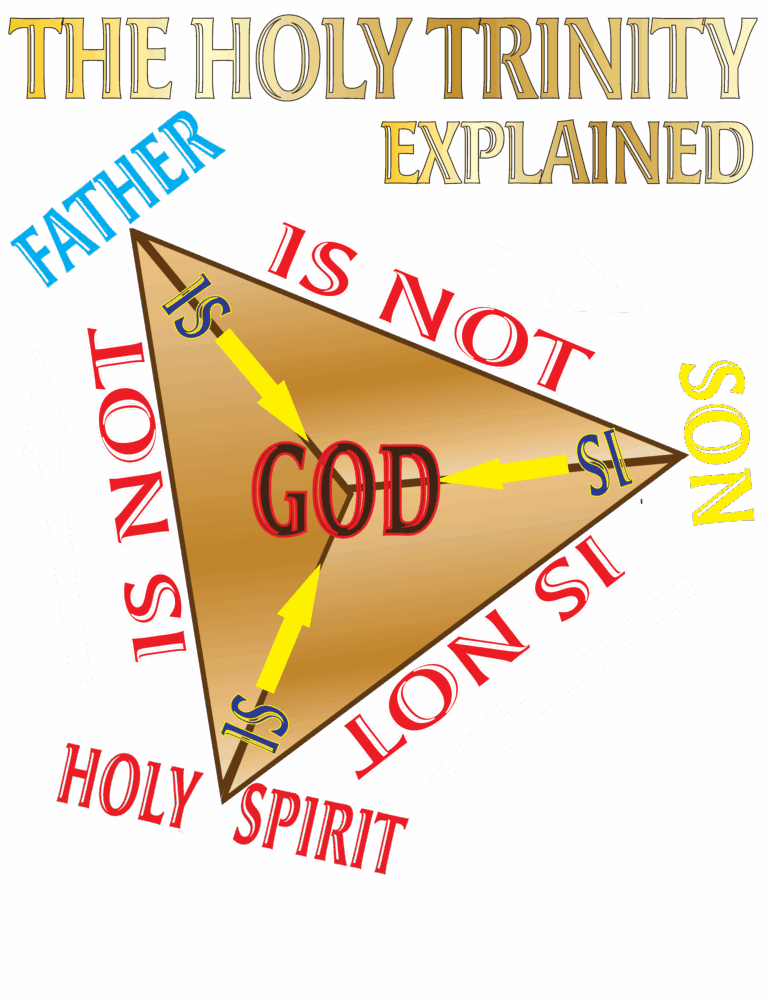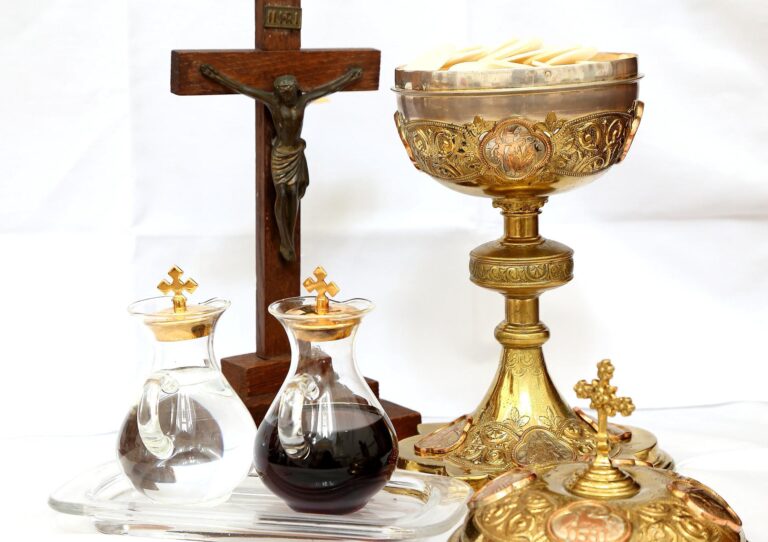How to Become Catholic: The Ultimate Step-by-Step Journey to Faith?
What does it mean to become Catholic?
This question resonates deeply with many souls seeking the fullness of Christian faith. The recent election of the Holy Father, Pope Leo XIV, has prompted a remarkable increase in individuals searching for information about joining the Catholic Church. According to recent data, dioceses throughout the world are witnessing growing numbers embracing Catholicism, particularly among the younger generations.
The path to becoming Catholic centers on receiving the three essential sacraments of Christian initiation: Baptism, Confirmation, and the Most Holy Eucharist. Each year as the Easter Vigil approaches, thousands throughout the world take this significant step, clothed in white garments symbolizing their purification from sin.
The Catholic Church guides those seeking full communion through a structured process known as OCIA (Order of Christian Initiation of Adults). This name replaced the former RCIA (Rite of Christian Initiation of Adults) in 2021, reflecting a deeper understanding of the journey as an ordered progression toward faith. For those not yet baptized, this preparation generally spans less than a year, culminating in the beautiful celebration of the Easter Vigil. Those newly received into the Church are called neophytes (meaning “newly planted”) during their first year of Christian life.
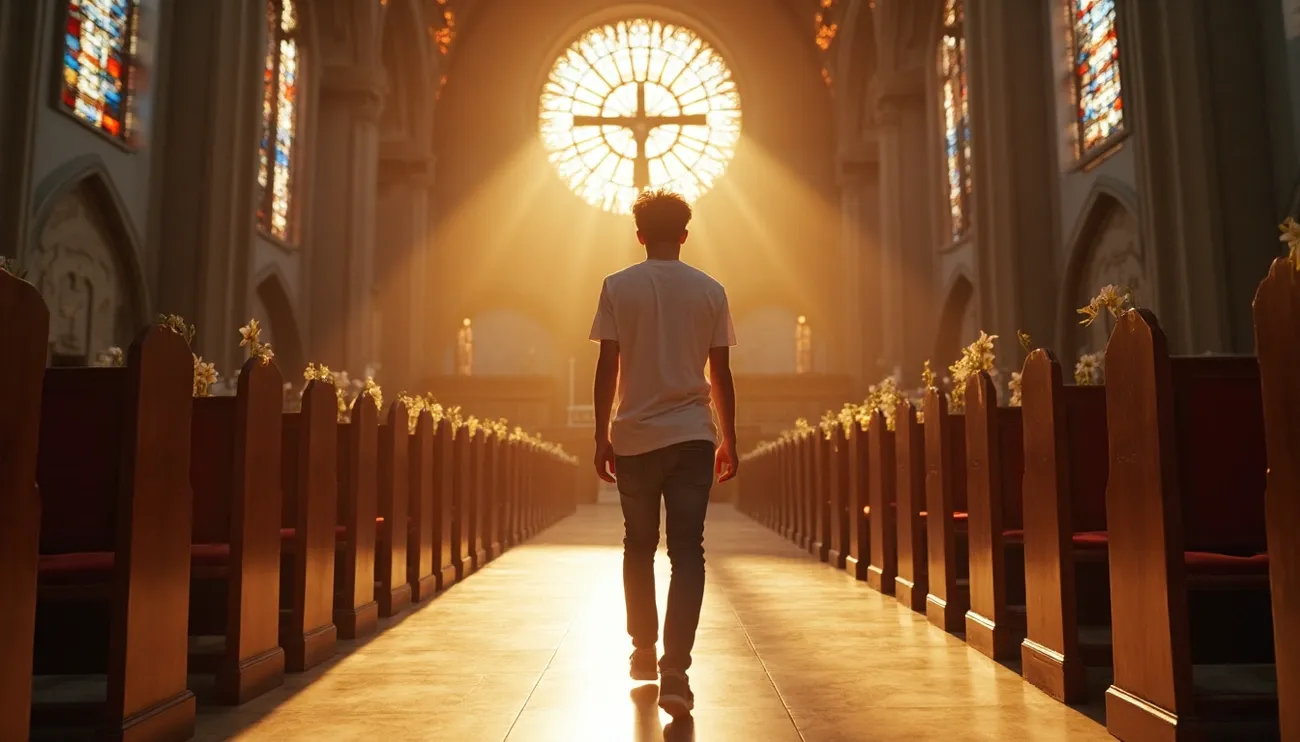
Whether you feel called to the priesthood, are considering religious life as a nun, contemplating service as a deacon, or simply seeking to enter the Catholic Church as a layperson, let us consider the steps of this sacred journey. Throughout this article, I will guide you through each stage of this process that leads to full communion with the Church established by Our Lord Jesus Christ.
What does the Journey to becoming Catholic look like?
Before embarking on your journey to Catholic faith, it is essential to understand your current religious standing. The path that lies before you depends greatly on where you begin, and the Church has different processes for different starting points.
Have you received the Sacrament of Baptism?
This question, seemingly straightforward, is the cornerstone that determines your entire path to Catholic faith. The Catholic Church makes a profound distinction between those who have never received the waters of Baptism and those who have already been baptized in some form.
If you have never been baptized, you will participate in the complete OCIA (or RCIA) process as what the Church calls a “catechumen.” This sacred journey involves distinct stages, culminating in receiving all three sacraments of initiation (Baptism, Confirmation, and Holy Eucharist) during the Easter Vigil celebration.
Should there be uncertainty about your baptismal status—perhaps family members recall it happening but no certificate exists—the Church, in her wisdom, provides a solution. According to canon law, when doubt persists after thorough investigation, you would receive what is called a “conditional baptism,” which acknowledges that if you were already baptized, this ceremony would have no effect.
What if you received baptism in another Christian tradition?
The Catholic Church recognizes most Christian baptisms as valid, provided they employed water and the Trinitarian formula (“in the name of the Father, and of the Son, and of the Holy Spirit”) with proper intention. This means Lutheran, Methodist, Episcopal, and most mainstream Protestant baptisms are considered valid.
For those baptized in another Christian tradition:
You are considered a candidate for full communion rather than a catechumen
Your preparation differs from those never baptized
You must obtain your baptismal certificate from your previous church
Your reception into the Church ideally should not occur at Easter Vigil to distinguish your journey from unbaptized candidates
There are exceptions to this recognition. The Church does not accept baptisms from certain groups like Mormons due to theological differences in intention. Furthermore, if a non-Catholic community used a theologically defective formula during baptism, the Catholic Church considers it invalid.
Returning Catholics: What about those baptized but separated from the Church?
If you were baptized Catholic but drifted away from practicing the faith, the Church warmly welcomes you home. Many dioceses report significant increases in converts, with numerous individuals returning to their Catholic roots.
For returning Catholics, the process differs from both unbaptized individuals and converts from other Christian traditions. Several priests have noted that many new converts are young adults in their 20s or early 30s who were baptized Catholic but never fully practiced the faith.
The essential first step is receiving the Sacrament of Reconciliation (Confession). As Catholics, we believe that if you’re returning to the Catholic Faith, you should receive the Eucharist as soon as possible, but first be reconciled through Confession if burdened by serious sin. Simply explain to the priest that you’ve been away from the Church, and he will guide you through this healing sacrament.
I highly recommend approaching this sacrament with honesty and trust. The joy of reconciliation with the Church is immeasurable, and many returning Catholics describe it as “coming home.”
Unlike those never Catholic, you cannot be “re-baptized” as this is theologically impossible. Baptism imprints what we call an indelible mark on the soul—it can never be erased or repeated. Instead, you need reconciliation with the Church through Confession, followed by receiving the Most Holy Eucharist.
Each path to Catholic communion is unique and based on your starting point, yet all lead to the same glorious destination: full incorporation into the Mystical Body of Christ, the Catholic Church.
What is the Path for Those Yet to Be Baptized?
What journey awaits those who have never received the waters of Baptism? The Catholic Church provides a beautiful, structured path that gradually forms the unbaptized person in faith, prayer, and Christian living. This sacred journey unfolds through five distinct stages, each bringing the soul closer to full communion with Christ and His Church.
1. The Period of Inquiry
The journey begins with what might appear as a simple step – reaching out to your local parish. I highly recommend calling the parish office to arrange a meeting with either the priest or the OCIA (or RCIA) coordinator. These initial conversations create a space where you may freely ask questions without any formal commitment to proceed further.
During this time of exploration, the Church meets you exactly where you are in your spiritual journey. As we read in the Scriptures, “Ask and it shall be given to you, seek and you shall find, knock and the door shall be opened unto you.” This period has no fixed duration – for some it may last weeks, for others months – depending entirely on your readiness to move forward in faith.
2. The Rite of Acceptance and Catechumenate
When your heart feels drawn to continue this journey, you will participate in the Rite of Acceptance, typically celebrated during Sunday Mass. This beautiful ceremony marks your public expression of desire to become Catholic, as the parish community welcomes you as a catechumen – a term dating back to the early Church, meaning “one being instructed.”
A profound moment in this ceremony occurs when you receive the sign of the cross on your forehead, sometimes followed by additional signings of your senses:
Your ears – to hear God’s word
Your eyes – to see God’s glory
Your lips – to speak God’s truth
Your heart – to embrace God’s love
Your shoulders, hands, and feet – to carry Christ to the world
Following this rite, your formal instruction begins, including weekly catechetical sessions, participation in Sunday Mass (though departing after the homily), and regular prayer practices.
3. The Rite of Election and Lenten Preparation
As the sacred season of Lent approaches, a significant milestone awaits – the Rite of Election. This ceremony, traditionally held on the first Sunday of Lent at the cathedral with the bishop presiding, marks the Church’s formal recognition of God’s call in your life. Your name will be inscribed in the Book of the Elect, signifying that God has chosen you from before the foundation of the world.
The subsequent weeks of Lent constitute the Period of Purification and Enlightenment – an intensive time of spiritual preparation. You will experience three special rites called scrutinies, typically celebrated on the third, fourth, and fifth Sundays of Lent. These powerful prayers help to purify your intentions and strengthen your resolve as the great day approaches.
4. The Sacraments of Initiation at Easter Vigil
The culmination of your journey occurs at the Easter Vigil – that most holy night when the Church celebrates Christ’s passage from death to life. In this profound celebration, you will receive all three sacraments of initiation:
First comes Baptism with blessed water, preferably by immersion as the fuller sign of dying and rising with Christ. Immediately afterward, you will be clothed in a white garment symbolizing your purification from sin.
Next follows Confirmation with sacred chrism oil, sealing you with the gifts of the Holy Spirit.
Finally, you will receive your First Holy Communion – the Body, Blood, Soul, and Divinity of Our Lord Jesus Christ.
5. Mystagogy: Deepening the Mysteries of Faith
The Greek word “mystagogy” means “to lead through the mysteries,” and this final stage extends from Easter to Pentecost – a period of fifty days. As a neophyte (meaning “newly planted”), you will continue meeting with your group to reflect on the sacraments and deepen your understanding of living the Catholic faith.
Much is unknown about the inner workings of grace in the soul during this sacred time. The Church, in her wisdom, provides this period for you to integrate fully into parish life and begin your lifelong journey of growing in faith. As St. Augustine beautifully expressed after his own conversion: “Late have I loved you, O Beauty ever ancient, ever new.”
I would not do justice to this transformative journey if I failed to emphasize that becoming Catholic is not merely joining an organization, but entering into a living relationship with Christ and His Church. Through these five stages, the seeds of faith are planted, nourished, and begin to bear fruit in your life.
The Path for Baptized Christians Entering the Catholic Church
For those already baptized in another Christian tradition, the journey to full communion with the Catholic Church differs greatly from the path of the unbaptized. Through your valid baptism, you already possess the foundation of Christian life, having been incorporated into Christ. As such, your journey focuses not on becoming Christian, but rather on completing your initiation into the fullness of Catholic communion.
1) The Initial Meeting with a Priest
The first step in this sacred journey is meeting with a parish priest who will serve as your spiritual guide. I highly recommend preparing for this meeting through prayer, asking the Holy Spirit to open your heart to God’s will.
During this conversation, the priest will help discern your current understanding of the faith and your reasons for seeking full communion with the Catholic Church.
You will need to provide documentation of your baptism, as the Church teaches that there is “one Lord, one faith, one baptism” (Ephesians 4:5).
The priest will explain that as a baptized Christian, you are considered a “candidate” rather than a catechumen—an important distinction in the eyes of the Church.
2) Formation in Catholic Teaching and Tradition
Unlike the unbaptized, your preparation will be tailored to your specific background and needs. Baptized Christians “should not be asked to undergo a full program parallel to the catechumenate.” This respects the Christian life you have already lived while focusing on areas where Catholic teaching might differ from your previous tradition.
Your formation will include:
Study of Catholic doctrine and moral teaching
Introduction to Catholic devotional practices and prayer traditions
Understanding of the sacramental life, especially the Holy Eucharist
Exploration of Catholic social teaching
Throughout this process, you will participate in many OCIA (or RCIA) activities alongside catechumens, but your journey remains distinct, honoring the validity of your baptism.
3) The Sacrament of Reconciliation and Profession of Faith
Prior to your reception into the Church, you will experience the healing grace of the Sacrament of Reconciliation. This is necessary because baptism remits only those sins committed before receiving it. For those with many years between baptism and becoming Catholic, I would advise preparing thoughtfully for this confession, considering mortal sins by kind and frequency (see article on the Sacrament of Reconciliation)
Subsequently, you will make your profession of faith with these beautiful words:
“I believe and profess all that the holy Catholic Church believes, teaches, and proclaims to be revealed by God.”
This statement represents your full acceptance of Catholic teaching in its entirety—a profound moment of grace and commitment.
4) Reception of Confirmation and First Holy Communion
The culmination of your journey normally takes place during a Sunday Mass in your parish community rather than at the Easter Vigil. This timing, helps avoid confusion about the validity of your previous baptism.
During this sacred liturgy, the priest will welcome you formally with the words:
“[Name], the Lord receives you into the Catholic Church.”
You will then be confirmed with sacred chrism oil and receive your first Holy Communion as a Catholic.
This moment marks not an end but a beginning—the start of your life in full communion with the Catholic Church founded by Our Lord Jesus Christ and guided by the Holy Spirit through the ages.
What are some special paths and Considerations in the Catholic Journey?
The path to full communion with the Catholic Church sometimes involves unique circumstances that require special pastoral care. Let us examine several situations that may call for approaches beyond the standard OCIA (or RCIA) process.
A) Marriage and Health Considerations on the Journey
Marriage considerations frequently arise when the Lord calls one spouse to the Catholic faith while the other remains in a different tradition. If you are already married, be assured that your marriage is respected, as the Church teaches that “marriage is a natural right, whether you’re Catholic or not”. Nevertheless, your marriage must be examined according to Catholic teaching to ensure its validity.
For those in interfaith marriages where only one spouse feels drawn to Catholicism, I would suggest practicing these virtues:
Patience in listening to your spouse’s concerns
Charity in setting a good example through daily witness
Prudence in possibly waiting until your spouse becomes more receptive
What about those with serious health conditions?
The Church, in her maternal wisdom, makes provisions for those physically unable to participate in regular formation. In cases of grave illness or danger of death, any priest may confirm an individual, showing the extent of God’s mercy in providing access to the sacraments.
B) The Call to Religious Vocations
The Lord calls some souls not only to membership in His Church but to special service within it. These vocational paths have their own distinct requirements:
For those discerning the priesthood: According to Canon Law, only baptized men may be ordained after completing seminary formation. A distinction exists between diocesan priests who serve in parishes under a bishop, and religious order priests (Dominicans, Franciscans, Jesuits, etc.) who follow their order’s particular charism and application process.
For those considering the diaconate: The word “deacon” comes from the Greek word diakonia meaning “servant.” Upon ordination, deacons take a vow of chastity, meaning they cannot marry afterward. However, men already married may be ordained as permanent deacons, serving the Church through Word, altar, and charity.
For women hearing the call to consecrated life: These holy women take vows of poverty, chastity, and obedience. A nun traditionally lives within a monastery in contemplative prayer, whereas a religious sister typically works actively in the world, serving in education, healthcare, or other apostolates.
C) Conditional Baptism and Other Special Cases
When doubt exists about a previous baptism, the Church provides for conditional baptism. The minister says: “If you are not yet baptized, I baptize you in the name of the Father and of the Son and of the Holy Spirit”. This preserves the theological truth that there is only one baptism.
This occurs in several situations:
When investigation cannot resolve doubts about a previous baptism’s validity
When a foundling’s baptismal status remains unknown
When emergency baptism was performed with questionable matter
It is important to note that Canon Law specifies conditional baptisms “must be celebrated privately rather than at a public liturgical assembly”. This shows the Church’s reverence for the sacrament and sensitivity to theological precision regarding baptism’s unrepeatable nature.
Conclusion
The decision to become Catholic represents one of life’s most profound spiritual journeys. Throughout this article, I have endeavored to guide you through the various pathways that lead to full communion with the Catholic Church. Whether you come to the Church unbaptized, baptized in another Christian tradition, or are returning to the faith of your youth, Holy Mother Church welcomes you with open arms.
The Order of Christian Initiation of Adults (or RCIA), while following a structured path, respects each person’s unique spiritual journey. This sacred process is not merely about acquiring knowledge of Catholic teachings but rather concerns the genuine conversion of heart. As the Church Fathers have taught us through the centuries, the time spent in preparation directly influences the depth of one’s Catholic foundation.
Receiving the sacraments of initiation—Holy Baptism, Confirmation, and the Most Blessed Eucharist—marks not an end but rather a beginning. After the Easter Vigil, your life as a Catholic continues to unfold during the period of Mystagogy and throughout your entire Christian journey. This ongoing formation strengthens your connection to both Christ and your parish community.
Many who have entered the Church express that becoming Catholic has transformed their lives in ways they never anticipated. The rich traditions, sacramental life, and spiritual practices of our faith provide an anchor during life’s storms. The universal nature of the Church connects us to a global community of believers spanning cultures and centuries.
Let us remember that questions and periods of uncertainty are natural parts of any faith journey. Our Holy Catholic Church has withstood two thousand years of human history, welcoming seekers from all backgrounds. As you contemplate this sacred step, trust that God’s grace will guide you through each stage of becoming Catholic—from your first inquiry to your lifelong growth in faith.
I highly recommend speaking with a priest at your local parish to begin this blessed journey. The path may seem long at times, but the destination—full communion with the Church established by Our Lord Jesus Christ—brings a joy beyond measure.
May God bless you abundantly as you discern this most important decision.
FAQs
Q1. How long does it typically take to become Catholic? The process of becoming Catholic usually takes at least one year, but it can vary depending on individual circumstances. Most parishes begin the Order of Christian Initiation of Adults (OCIA) sessions in late summer or early fall, culminating at the Easter Vigil the following spring.
Q2. Can I become Catholic if I’ve been baptized in another Christian denomination? Yes, you can become Catholic if you’ve been baptized in another Christian denomination. The Catholic Church recognizes most Christian baptisms as valid. You’ll follow a different path than unbaptized individuals, focusing on instruction in Catholic teaching and completing the sacraments of Confirmation and First Communion.
Q3. What are the main steps in becoming Catholic for an unbaptized person? The main steps for an unbaptized person include: 1) Inquiry and initial meetings, 2) Rite of Acceptance and Catechumenate, 3) Rite of Election and Lenten preparation, 4) Receiving Baptism, Confirmation, and First Eucharist at Easter Vigil, and 5) Mystagogy, a period of continued formation after initiation.
Q4. Is there a special process for returning Catholics who were baptized but left the Church? Yes, there is a special process for returning Catholics. It typically involves receiving the Sacrament of Reconciliation (Confession) first. You don’t need to be re-baptized, but you’ll need to be reconciled with the Church through Confession before receiving the Eucharist again.
Q5. What accommodations are made for adults with health issues who want to become Catholic? The Church makes provisions for those with health issues who cannot participate in regular formation. In extreme cases, such as danger of death, any priest may confirm an individual. The process can be adapted to accommodate various health-related needs, ensuring that everyone has the opportunity to join the Catholic faith.
